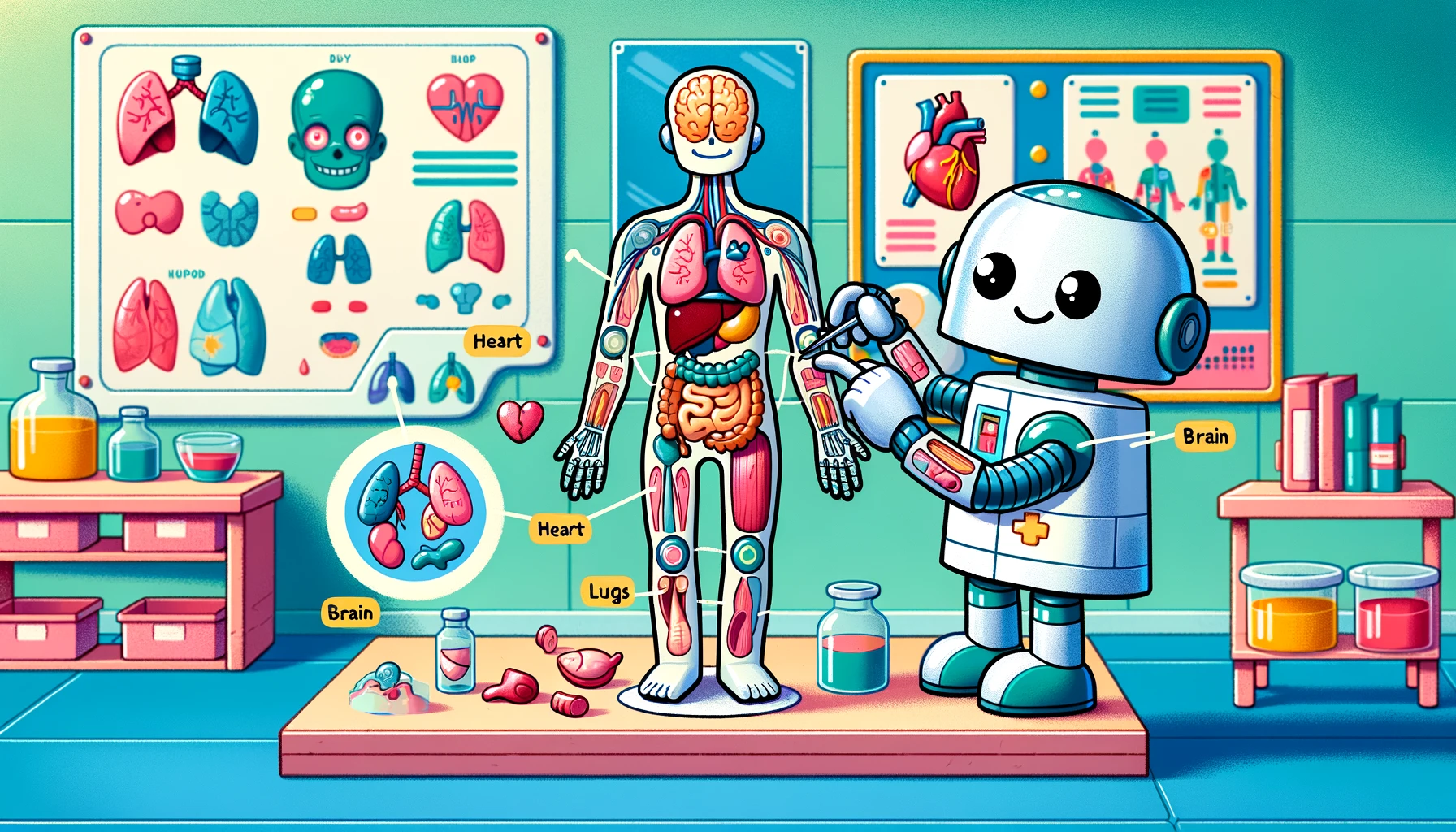How the Body is Made: Structure and Function
How the Body is Made: Structure and Function
Table of Contents
- Introduction to the Human Body
- The Building Blocks: Cells
- Tissues and Their Functions
- Organs and Organ Systems
- The Skeletal System
- The Muscular System
- The Circulatory System
- The Nervous System
- The Digestive System
- Conclusion
- References
How the Body is Made: Structure and Function
Introduction to the Human Body The human body is a complex and highly organized structure composed of cells, tissues, organs, and systems that work together to maintain life and health. This article explores how the body is made, highlighting its fundamental components and their functions.
The Building Blocks: Cells Cells are the basic building blocks of the body:
- Structure: Each cell consists of a cell membrane, cytoplasm, and nucleus. The cell membrane controls what enters and exits the cell, the cytoplasm contains organelles that perform various functions, and the nucleus houses genetic material (DNA).
- Function: Cells perform numerous functions, such as energy production, protein synthesis, and replication. They also specialize to form different tissues and organs.
Tissues and Their Functions Tissues are groups of similar cells that work together to perform a specific function. There are four main types of tissues:
- Epithelial Tissue: Covers body surfaces and lines cavities, protecting underlying structures and allowing absorption and secretion. Examples include skin and the lining of the digestive tract.
- Connective Tissue: Supports, binds, and protects other tissues and organs. Types include bone, cartilage, blood, and adipose (fat) tissue.
- Muscle Tissue: Responsible for movement and force generation. There are three types: skeletal (voluntary movement), cardiac (heart contraction), and smooth (involuntary movement in organs).
- Nervous Tissue: Transmits electrical impulses, allowing communication between different parts of the body. It consists of neurons and supporting cells (glial cells).
Organs and Organ Systems Organs are structures composed of different tissues working together to perform specific functions. Organ systems are groups of organs that work together to maintain homeostasis and perform complex functions. Examples include:
- Heart: An organ made of muscle tissue (cardiac muscle) and connective tissue, responsible for pumping blood.
- Liver: An organ involved in detoxification, metabolism, and bile production.
The Skeletal System The skeletal system provides structure, protection, and movement:
- Bones: Provide support, protect internal organs, and store minerals. Bone marrow within bones produces blood cells.
- Joints: Allow for movement and flexibility between bones.
- Cartilage: Cushions joints and helps in the formation of bones during growth.
The Muscular System The muscular system enables movement and stability:
- Skeletal Muscles: Attached to bones and responsible for voluntary movements.
- Smooth Muscles: Found in the walls of internal organs, controlling involuntary movements.
- Cardiac Muscle: Found only in the heart, responsible for pumping blood.
The Circulatory System The circulatory system transports blood, nutrients, gases, and waste products throughout the body:
- Heart: Pumps blood through the circulatory system.
- Blood Vessels: Arteries, veins, and capillaries carry blood to and from the heart and throughout the body.
- Blood: Carries oxygen, nutrients, and waste products. Components include red blood cells, white blood cells, platelets, and plasma.
The Nervous System The nervous system controls and coordinates body activities:
- Central Nervous System (CNS): Consists of the brain and spinal cord, processing information and controlling responses.
- Peripheral Nervous System (PNS): Includes nerves outside the CNS, transmitting signals between the CNS and the rest of the body.
- Neurons: Specialized cells that transmit electrical impulses.
The Digestive System The digestive system breaks down food, absorbs nutrients, and eliminates waste:
- Mouth: Begins the process of digestion by mechanically breaking down food and mixing it with saliva.
- Esophagus: Transports food to the stomach.
- Stomach: Secretes acid and enzymes to digest food.
- Small Intestine: Absorbs nutrients into the bloodstream.
- Large Intestine: Absorbs water and forms waste for excretion.
Conclusion Understanding how the body is made provides insight into its complex and coordinated functions. From cells and tissues to organs and systems, each component plays a vital role in maintaining health and supporting life. By appreciating the structure and function of the human body, we can better understand how to care for it and address health concerns.

<ⓒ WizardMedics (wizardmedics.com)>


